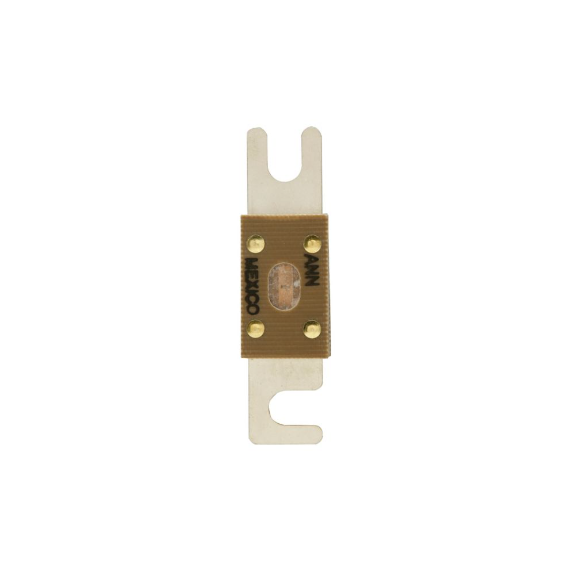Bussmann ANN-800 fuse is ideal for safeguarding equipment and circuits from potential damage, fire hazards and electrical failures due to overcurrent conditions by interrupting the circuit when current levels exceed safe limits.
Working Mechanism:
- As the electrical current surpasses a predetermined threshold, it induces a notable rise in the temperature of the fuse element.
- With the accumulation of heat progressing, the material of the fuse element approaches a stage where it transforms into a liquid state or vaporises, surpassing its designated melting point. This transformation triggers a breach within the fuse element, leading to the discontinuation of the circuit.
- The process of the fuse element undergoing melting or vaporisation initiates the creation of a void within the circuit. This spatial separation effectively interrupts the current flow through the fuse, thereby severing the circuit's continuous connection.
Features:
- Bussmann ANN-800 fuse features indicating capabilities providing real-time visual feedback on the fuse's operational status.
- It is made of a blend of glass and melamine for high strength and optimal performance.
- This limiter fuse allows bolt-on mounting for ensuring secure and hassle-free installation.
- It has a single fuse element that increases efficiency and rapidness in circuit protection during fault.
Frequently Asked Questions:
Q. How long does a Bussmann fuse last?
A. Bussman fuses typically last around ten years before going bad due to blown fuses or, in some cases, aging issues that cause currents to stop running through them.
Q. What is the difference between a fuse and a breaker?
A. Fuses and circuit breakers share the common purpose of interrupting the electrical flow, albeit employing distinct mechanisms. A fuse functions as a metal component that melts due to excessive heat. Conversely, a circuit breaker utilises a switch mechanism that activates upon detecting an electrical overload.
Q. How do you check a fuse without a tester?
A. Utilise wire strippers to remove approximately an inch of insulation from both ends of the wire. Attach one wire end to a terminal on the fuse and the other wire end to the opposing fuse terminal. If the fuse is operational, the light bulb will illuminate. Conversely, if the fuse is faulty, the light bulb will remain unlit.
 Change Country
Change Country

